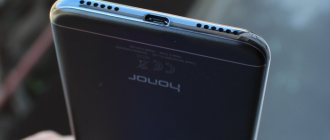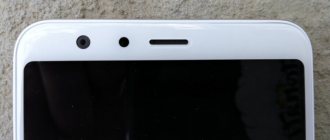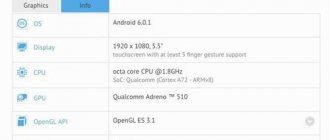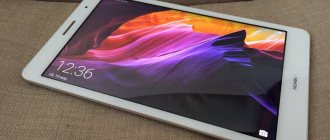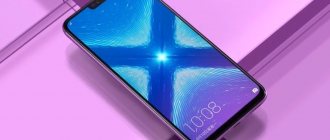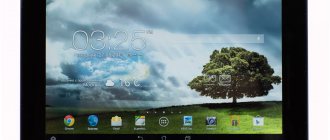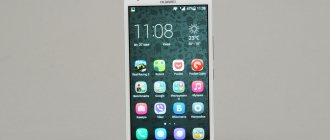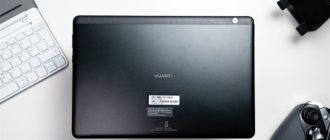We study smartphone reviews and reviews on forums
Before you start looking for defects in a specific smartphone in a store, you need to find out what you should look for first.
There are plenty of forums on the Internet where lists of possible shortcomings (defects) of certain models are published, lovingly compiled by users. Before going to the store to buy a smartphone, these lists should be carefully studied. Or even rewrite it on a piece of paper - you never know, you might forget something along the way. Don't underestimate these sources of information. This is not the first day that people have been using what you are about to buy. And managed to collect marriage statistics. For example, smartphone A may have problems with the camera, while smartphone B may have problems with the fit of the panels and the operation of the second SIM card. Would you have guessed to check exactly these points in the communication salon if you did not know about them in advance? Is not a fact!
As for smartphone reviews, we recommend paying special attention to the so-called unboxing or unboxing reviews. This is when a blogger on YouTube opens a sealed box, shows a completely new device in films and demonstrates what is included in the package.
What is the fundamental difference between a smartphone unboxing review and regular text reviews? Journalists often receive used devices for testing, and even without a box or accessories. But unboxing involves talking about a completely new smartphone. Exactly the same as the one they will offer you in the store. While watching unboxing, pay attention to the films: on some models they are glued only on the front, and on some they are also glued on the back. This will be noticeable in the video. And if a store tries to sell you a device without one of the films, know that someone has used it. Unfortunately, this happens: sometimes smartphones are sold out of curiosity by dishonest sellers, and sometimes they try to sell returned goods under the guise of a new one. And yes, they sometimes pocket the components of the package - adapters, headphones, cables, and so on. So, while watching the unboxing review, remember the package contents.
Keep in mind: smartphone X in the version for Russia may not have the same package content as in the version for the USA or, for example, China. So the priority is videos by Russian authors.
Second way
There are a huge number of applications that show the characteristics of mobile devices. We will take as an example one of the most famous - CPU-Z.
CPU-Z is a free application application for displaying technical information about the user's device. The program was initially developed for Windows, then a version appeared for the Android operating system.
You can download CPU-Z from Google Play Market. You won't have any problems with this. Once the application is downloaded and installed, launch it.
The SOC tab will open in front of you, which contains all kinds of information about the processor, including its frequency.
In addition, you will see other tabs in CPU-Z. For example, the BATTERY tab will tell you everything about the battery:
The SENSORS tab shows information about sensors in real time:
We examine the box with the smartphone and the condition of the films
Broken paper seals indicate only one thing: the box has been opened. Why is an open question. Maybe the consultant decided to look at the device, or maybe even use it. Why would you pay for a smartphone that looks like it's new, but isn't?
The same applies to films: if they are missing or they are glued crookedly and with bubbles, you know that something is fishy here. However, there are exceptions: on very cheap devices, films are often glued crookedly and with bubbles. And it is not the sellers who are to blame for this, but the Chinese factories of the second and third tier, which do not comply with the technological process.
We go to the call log, SMS and gallery
A real-life story: a girl bought a smartphone in a Russian online store, received the parcel, turned on the device and... saw in her memory a couple of SMS messages, a stack of selfies of some young man and several more direct evidence that the device was used. Yes, it was new and in film, but someone - apparently just for the sake of interest, since the model was exotic - turned it over in their hands. Some people will not pay attention to such trifles, while others will find it unpleasant. Therefore, before purchasing, it is worth looking to see if there are any artifacts left from the uninvited “user” in the memory.
Why do you need to know what processor is on your phone?
The chipset or SoC is essentially responsible for the entire functional component of a mobile device. It depends on the processor what features the smartphone will be equipped with. For example, the chipset limits the maximum resolution for the camera, as well as support for certain functions.
In addition, the overall speed of the smartphone depends on the processor. Thus, a person who knows the SoC model can fully understand what his mobile device is capable of. And based on the processor, you can guess how its operation will affect autonomy, and also understand how long the smartphone can function without complaints.
Looking for scratches, dents and chips on your smartphone
Sometimes such artifacts are left by the same sellers, and sometimes the device arrives with them from the factory. Scratches, chips and dents should be identified before purchase. Because they are not considered a marriage: as soon as you pay for the smartphone, they turn into your personal problem. If a faulty screen, camera, battery, etc. can later be recognized as defective and repaired or replaced under warranty, then scratches and other exterior defects, if you did not see them right away, will not bother anyone.
Checking how the smartphone camera works
Obviously, it's worth taking a few pictures. In the store and, very preferably, also on the street. And then carefully examine them - so that there are no blurs in certain places, obvious stains, and so on.
But there is one more life hack. From an ordinary photograph of a street or the interior of a store, you can assess the quality, but it is not always possible to discern defects - after all, the picture will contain a lot of details, bright colors, and so on. Therefore, take it with you or ask the seller to give you a regular white sheet.
The fact is that various kinds of spots (pinkish, yellowish, bluish) on frames are the scourge of many smartphone models. Such spots are clearly visible in photographs of homogeneous white objects. Sometimes this is a software problem, and then you will encounter it in all instances without exception. Here it’s up to you to decide: either take the smartphone and wait for firmware updates, or refuse the purchase.
And sometimes it's the hardware. This means that one device can give such an unpleasant effect, while another cannot. Therefore, after detecting stains on a photo of a white sheet, you should ask the consultant to bring another copy from the warehouse. Maybe you'll be lucky.
How to find out the characteristics of an Android phone.
Each electronic device has technical characteristics by which it can be compared with similar ones. It is thanks to these characteristics that we can conclude which smartphone, tablet or computer is better and more suitable for us. Also, based on this data, it is possible to determine whether this device is the original version, and not a fake, of which there are a lot nowadays, and also of very good quality, but naturally much cheaper than the originals.
You can download the Pro versions of the applications by following the links below the descriptions.
But here lies the problem for Android and other OSes. Most smartphone manufacturers hide the characteristics of their smartphones. And if gigabytes of memory can be found using built-in tools and simple calculations, then you will not find information about the processor, camera and other hardware.
The only exception is HTC, which provides almost all the information about the Smartphone system.
on other branded Smartphones such as LG, Samsung, Sony, and others, even from Chinese manufacturers.
But what to do then, how to find out what kind of hardware it costs?
There is an answer: using special Applications, which we will talk about below.....
First:
CPU-Z
It will provide comprehensive information about the system, including the number of cores of your Android device and more, since the application is available for almost all existing operating systems. Convenient and simple interface.
The CPU-Z Pro application can be downloaded here.
Second:
The next application that will help us see everything that is inside a Smartphone or Tablet is AIDA64 , which may be familiar to many from working with a computer on the Windows system. Now it is available on Android.
The application is simple, convenient and really provides all the information about the system 100%.....
Download the AIDA64 Pro app here.
Third:
Another application called AnTuTu Benchmark will help you find out not only about your system, but also check your device for performance, and show you its rating in relation to other Smartphones.
You can download the AnTuTu Benchmark application here.
There are a lot of different applications in the Play Store with similar functions, but these three, in my opinion, are the BEST
.
Thank you for visiting the Site.
Please leave your Comments or Tips, Subscribe to the newsletter to stay up to date with news
And also share articles from our site with your friends on social networks by clicking on the Icon.
Checking the operation of the smartphone touch screen
To test the touch screen, go to the menu and click on each and every application icon. They are located almost throughout the entire display area. By clicking on them, you can identify so-called blind spots - places where, for some reason, the sensor responds poorly to pressing or does not respond at all. The second option is to type text on the keyboard. First in vertical mode, and then in horizontal mode. This way you will also cover almost the entire screen area.
Note that recently such a defect has been extremely rare in smartphones, and yet sometimes you can encounter it. Especially in ultra-budget smartphones.
Checking your smartphone display for dead pixels
There are several options here. The first is by using screen testing apps like DeadPixelTest. Everything is fine with them, but it’s far from a fact that you will be able to install such an application on a device that has not yet been purchased. Sometimes store policy prohibits potential customers from installing their software on smartphones, and sometimes it’s simply not very convenient. For example, if there is no Wi-Fi in the salon or if you do not want to enter your account into your smartphone or register a new one specifically for testing.
In this case, you should prepare to check for dead pixels in advance. We take a MicroSD card at home and record several monochromatic pictures on it - red, black, gray, blue, white, and so on. In the store, we insert the flash drive into the slot of the smartphone, go to the gallery and carefully look for “alien” dots in the pictures. (At the same time, by the way, check whether everything is in order with the slot and whether the device recognizes MicroSD normally.) However, this method is also not universal: there are models (for example, OnePlus 5 and all iPhones without exception) that do not have slots for flash drives. kart.
And yes, on a white and black background (most often on them) you can see not only dead pixels, but also various stripes - for example, yellowish or bluish. This is also a marriage. Below is a photo of such a strip posted by a user on the official Meizu forum.
How to find out which processor is on a smartphone in CPU-Z
The CPU-Z application operates in English. In the app store, search for the CPU-Z program, and then follow these steps:
- Install the CPU-Z program on your device.
- Launch the program, if necessary, give the application the necessary permissions.
- The application will open in the “SoC” tab, which contains information about the processor installed on this mobile device.
The “SoC” tab contains all the necessary information:
- Full name of the processor.
- Number of Cores.
- Architecture and revision information.
- Information about the technical process.
- Load of processor cores at a given time.
- Data about the video accelerator installed on the chip.
Other tabs collect data on the following parameters:
- Devise - general information about the device.
- System - system information.
- Battery—information about the device’s battery.
- Thermal - temperature on the device components
- Sensors - information about sensor devices.
- About—information about the application.
Checking the build quality of the smartphone
You could write a dissertation on how to check the build quality of a smartphone, but we will still try to briefly highlight the most important points.
First: the glass covering the screen may be glued crookedly. To identify this point in time, you should do the following. First, simultaneously run your fingers along the ribs - that is, along the places where the side edges of the body meet the front. Your fingers should not feel any bumps or dents. Secondly, it is worth comparing the width of the slots around the screen. The gaps at the joints must be perfectly uniform. If the width is different, there are problems with assembly. Thirdly, you should put your smartphone on a horizontal surface and look at it from the ends. If any errors were made during assembly, you will most likely notice that the front panel is not installed level.
Second: creaks, chattering and play in the body panels are unacceptable. By 2020, even the smallest Chinese factories had mastered assembly technologies that ensure perfect fit of parts. If there is something loose in the smartphone, then it is most likely defective. Request another copy.
At the same time, even in not the cheapest smartphones, the volume and power keys often rattle slightly. This moment should not be perceived as a marriage - rather, it is just such an unpleasant feature. You can check if this is true by asking for a second device for comparison.
And one more thing: extraneous sounds (tapping) from the camera module are more normal than abnormal. These are the features of optical systems installed in smartphones.
What types of processors are installed in Android smartphones?
The SoC in a smartphone is noticeably different from the processors installed in full-fledged computers. This is explained by the dimensions of the mobile device, which, according to an unspoken rule, should fit easily into a pocket. When analyzing the features of phone platforms, you need to abstract from knowledge about computer processors. We have collected all the questions regarding SoC, and right now a specialist is ready to give his answer to them.
Hermann
Expert in the field of digital technologies and the activities of mobile operators. I am engaged in constant monitoring of industry changes in Russia and abroad.
Ask a Question
Question to the expert
What does a mobile processor look like and what are its dimensions?
The SoC in the phone is very small in size. As a rule, in appearance it resembles a small chip that is installed at the top of the smartphone. For example, the dimensions of the battery are tens of times larger than the dimensions of the processor.
Which companies produce processors for phones?
The most popular companies that produce chipsets are Qualcomm and MediaTek. In addition, smartphone manufacturers themselves produce their own processors. On Samsung – Exynos, and on Huawei and Honor – Kirin.
What processor characteristics should you pay attention to?
Firstly, the number of cores. True, today almost all chipsets are 8-core. Also important is the core frequency, the technology used and support for certain memory standards.
How can you tell from the chipset how long a smartphone will hold a charge?
Of course, the main indicator of autonomy is battery capacity. But it will play a much less significant role if the smartphone SoC is based on an outdated technical process. Essentially this is the size of the chipset itself. It is measured in nanometers and the smaller it is, the longer the mobile device can hold a charge.
Is it possible to change the processor in a phone?
Unfortunately, such an operation is not performed in authorized service centers. This element of the smartphone is located in a hard-to-reach place. But some people can still replace the processor. True, for exactly the same model. That is, it will still not be possible to install a more powerful chipset.
In conclusion, it is necessary to create an image of the ideal processor for 2020. It should have approximately the following characteristics:
- number of cores – 8;
- maximum clock frequency – 2.9 GHz;
- technical process – 7 nm;
- memory type – LPDDR5;
- drive type – UFS 3.0.
Of course, these characteristics will be relevant only for the flagship segment. In the mid-budget price range, it is almost impossible to find a smartphone with a similar SoC.
You can use special applications to evaluate the power of the chipset. For example, AnTuTu or GeekBench.
Checking the operation of the audio part
With the speaker, everything is simple - I launched the preset melodies, and if they are played, then everything is fine with the device. If you don’t trust the built-in ones, bring a MicroSD card with your favorite songs from home (provided that the device supports flash drives). With headphones it’s more complicated: some manufacturers - the same company Xiaomi, for example - do not include “ears” in their smartphones, which makes it difficult to check during the purchase process. Therefore, either ask the seller for headphones for testing, or, better yet, bring your own.
Checking the connection
With cellular communications, everything is simple: put on a SIM card and call someone. But you shouldn’t hang up immediately after you hear “hello” on the other end of the line. Talk for a couple of minutes - this way you can check the microphone’s operation.
Also, pay attention to whether the screen goes dark when you bring the smartphone to your cheek. If it does not go out, then the device has problems with the proximity sensor. This means that during a conversation you will press your cheek on various elements on the touch screen. Pleasure is still there.
It is more difficult to check the mobile Internet - practice shows that the glitches associated with it are of a floating nature, that is, in a number of models they appear from time to time. And it’s not a fact that they depend specifically on the smartphone. It may turn out that there are problems with the cellular operator.
To test Wi-Fi, you will have to connect to a wireless network - if it is available, of course. Another option is to enable traffic sharing mode, if it is supported on the smartphone you have with you. An important point: if nothing loads either in the browser or anywhere else, you should not immediately consider the smartphone defective. Check the date and time: sometimes they get lost due to being in the warehouse for a long time, in which case most Internet services do not work. Set the settings to the current year and the correct time - after that, most likely, everything will fall into place.
Android characteristics: how to find out the detailed characteristics of your device
How to find out the characteristics of an Android device? How much memory does he have? What processor is on my device? In this article, we will offer you a couple of solutions to answer these questions.
Does it happen that after downloading an application from the Internet (in APK format or from an application store), the downloaded software does not work, although it was installed correctly and without errors?
This may be due to the fact that unlicensed software is often made for specific GPUs and even phone models. And your smartphone probably does not support the system requirements of the application. The minimum amount of information about the smartphone can be found:
- by reading the instructions that were included in the box with the purchased device;
- by looking in the phone settings and reading the information in the “About phone” section (“Settings” -> “System” -> “About phone”. On all devices there will be approximately this path to system information). In this case, you will have to delve into the tabs. You won’t get a clear summary of what you need, all the data will be scattered;
Photo: Phone information
- use a specialized program or utility to analyze your smartphone.
You can read the instructions and search for information on your Android device yourself. We suggest considering programs for displaying detailed information about the characteristics of an Android device.
AIDA64 (Download)
Many people are already familiar with the name AIDA, since a similar program for PCs is often used to collect data about hardware. The application allows you to get incredibly detailed and structured information about your Android device, including temperature, codecs, sensors, system folders, and battery. There is a lot of data and most likely only advanced users or smartphone software specialists will understand most of it. For a simple user, more than 60% of the information is simply not useful. Moving through the tabs, you will sometimes have to search for the necessary data. Advertising is present, but does not interfere.
Photo: AIDA64
CPU Z (Download)
In CPU Z from xSoft Studio, information is presented in a more readable and understandable form for the average user. Display, sensors, central processor, memory, device, etc. - everything is here. But, unfortunately, additional and necessary functions (for example: “Network”) are available only after purchasing the full version of the program. The most common, simple program. There is nothing special or unique.
Photo: CPU Z
AnTuTu Benchmark (Download)
An excellent program that allows you not only to view the characteristics of your Android, but also to test your device in the most severe conditions and compare it with other models. The characteristics are displayed only the most necessary, basic and understandable. There are no unnecessary or unclear abbreviations.
Testing is carried out using the maximum load of the central and graphic processor. The speed of data transmission and reception both from the internal storage and from the network is taken into account.
Photo: AnTuTu Benchmark
Heavy, high-poly 3D video is used as the load. During the test, the phone will become very hot. On weak devices, the picture on the screen will freeze a lot. Don't be afraid, this is how it should be. After completion, you will see a device rating in points, describing a comparative performance of your device.
Photo: AnTuTu Benchmark
A test using 3D models is possible only after installing the additional AnTuTu 3DBench () , which is essentially an extension for the main application. Without extension, only simple tests are possible. You can, for example, test multi-touch.
Photo:
AnTuTu 3DBench
AnTuTu Benchmark offers to download another additional extension AnTuTu Officer (). After doing a few manipulations with the computer and the QR code, it will show whether your phone is “gray” or not.
Photo: AnTuTu Officer
Droid Info (Download)
A good program that provides information about the hardware and characteristics of Android devices. Shows only the main characteristics with a slight expansion. The application is working, but requires some improvement (it does not always provide correct information, especially about new devices). And the last update dates back to July 24, 2020. It seems that the developers abandoned their creation, but in vain. The interface is very convenient and simple; the necessary information can be found in a couple of seconds. It is possible to send a detailed report about the device (in the form of text) to a mailbox - a strange function, but it can be useful.
Photo: Droid Info
CPU—Z from CPUID (Download)
Almost identical to Droid Info program, only in English. Unlike the latter, CPU-Z is regularly updated and supported by developers. The information is accurate and correct, everything corresponds to reality. Those who do not know English should not download it; there are a lot of technical names. By the values themselves, you can guess what characteristic we are talking about, but still not always.
Photo: CPU-Z from CPUID
Geekbench 4 (Download)
Another powerful phone performance tester, similar to AnTuTu Benchmark. Provides only the basic characteristics of the Android device: model, memory size, firmware, graphics processor, number of cores, etc. (we will not see sensor readings and changes in processor temperature here). It has the ability to check the performance of the device under load. Unlike AnTuTu, the application does not require additional installation of extensions.
Photo: Geekbench 4
When choosing a program to view the characteristics of your Android, you should proceed from your needs. Is information about exact temperature values, sensor readings and load on processor cores really necessary? It’s worth trying out all the applications and finding the one you need and the most convenient, specifically for your needs.
Dear readers! If you have any questions or comments on the topic of the article, please leave them below.
Checking the battery
If the model has a removable battery, then it should have a white indicator. If there is no white, but there is red, then you know that moisture has entered the smartphone. And it may happen that he will not live long.
Also, for the sake of order, you should put your smartphone on charge for at least a couple of minutes - to make sure, firstly, that the interface connector is working, and secondly, that the charger is working.
Bonus track: testing a smartphone using special applications and codes
Google Play and the App Store have a huge number of applications for testing all smartphone systems. If the seller doesn’t mind and the store has Wi-Fi, why not? Such applications will tell you everything about the screen, battery wear, sensor operation, and much more. For example, in the case of an Android smartphone, you can install Test Your Phone or Phone Doctor Plus. However, such software cannot be called completely reliable. For example, we tried to test the flashlight using one of these applications, and it reported that there was no flashlight in the smartphone (see screenshot below). Although it exists and works.
There are also so-called service codes - they are individual for each manufacturer, and sometimes for different models of the same company. They also allow you to learn a lot of interesting things about your smartphone, from system problems to total talk time. Lists of codes can be easily searched on the Internet - just enter the phrase “service codes for so-and-so’s smartphone” into a search engine.
That's all. Nothing complicated. Enjoy the shopping!
Viewing methods
To view the characteristics of a smartphone, we need to have access to the Internet, a working official application store from Google called Google Play, or at least a browser. Alas, the characteristics of the smartphone are not written anywhere in the system itself, since the developers hide them from the Settings application.
Some parameters can be found out by reading them on the box. But, as a rule, very little information is indicated there.
There are a lot of ways to find out all the characteristics of a phone, but they are all essentially divided into two:
- Find out the characteristics of your smartphone on the Internet.
- Download a special application from the Market to obtain information.
For the first case, we need to know the phone model, and for the second, download the utility. Both of these options are quite good and suitable depending on the situation. Read more about them below.
The first way is through a search engine
In order to view the characteristics of a phone through a search engine, you need to find out the make and model. Fortunately, these two characteristics are present in the smartphone settings. To do this, follow these steps:
- Go to "Settings". You can open them in one of the following ways: by clicking on the gear in the notification shade or by launching the corresponding “Settings” shortcut in the launcher.
- Scroll to the bottom of the list to the “About the system” item.
- Open About Phone.
- This menu contains the smartphone model, which is what we need to use in the future:
- Now, having copied the model, open any search engine and write “*smartphone model* characteristics”, where instead of the text in the asterisks, insert directly the model that you recognized in the settings.
The search results will appear in front of you. You can open any convenient website and view the complete data. For more detailed information, you can go to the model discussion thread on the popular 4pda forum. To do this, simply write the smartphone model with the prefix “4pda discussion”.


